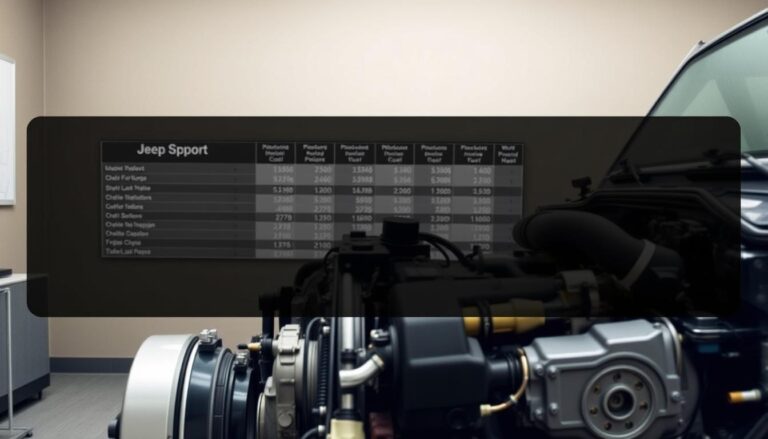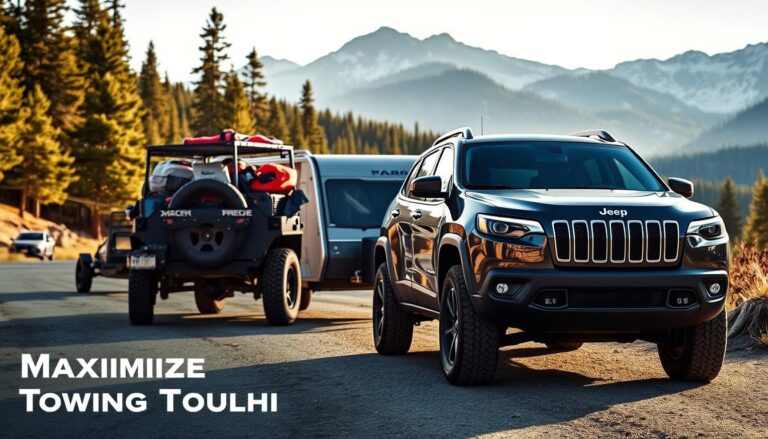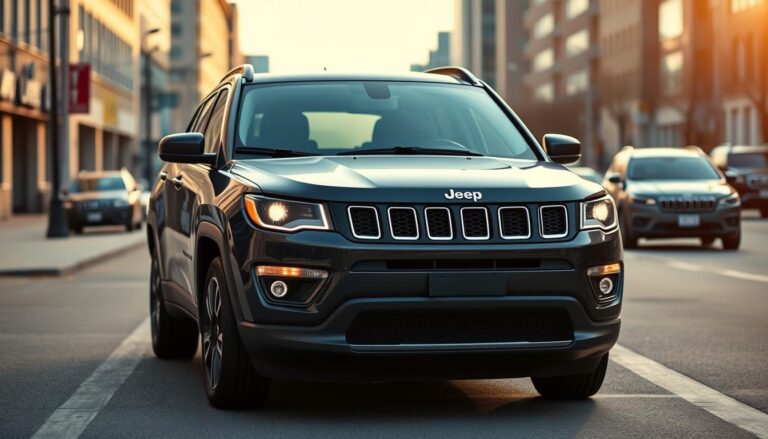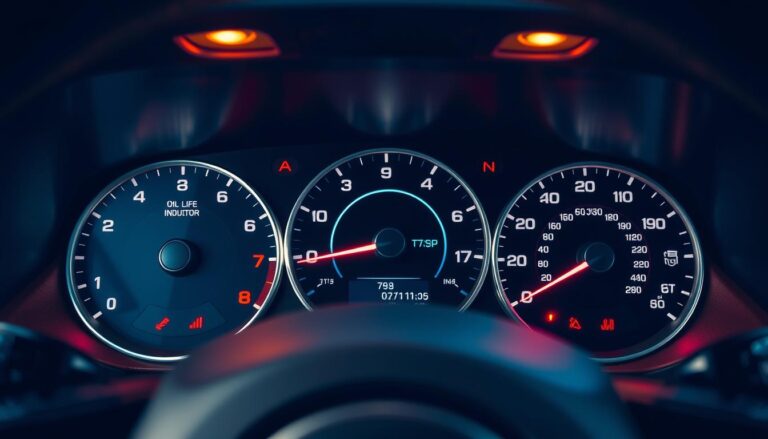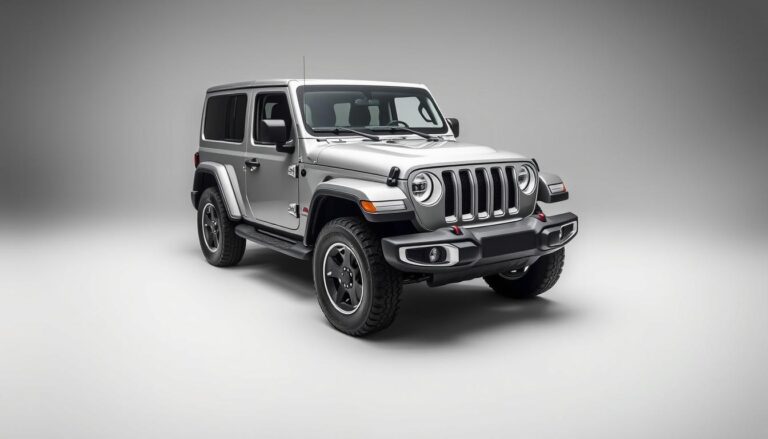Jeep Wrangler vs Jeep Rubicon: Choosing the Best Off-Road Companion
Off-road fans have a big choice to make between the Jeep Wrangler and Jeep Rubicon. Both are top picks for rugged adventures. But they have different features that make them stand out.
The Jeep Wrangler and Rubicon are more than just cars. They offer unique off-road abilities and designs. If you love exploring new trails, you’ll find something special in these SUVs.
We’ve looked at everything about these amazing vehicles. From how they handle rough terrain to their prices, we’ve got it all. Our goal is to help you find the perfect off-road partner.
Knowing the differences between these Jeeps takes some knowledge. Whether you’re out for a quick trip or a long adventure, this guide will help. It shows what makes each Jeep special and right for you.
Understanding the Jeep Wrangler and Rubicon Heritage
The Jeep Wrangler is a symbol of American off-road adventure. It has a rich history of rugged design and unmatched terrain mastery. From its military roots to today, the Wrangler has evolved to meet outdoor enthusiasts’ needs.
Evolution of the Wrangler Lineup
The Jeep Wrangler started with the legendary Willys Jeep during World War II. Over time, it changed from a military vehicle to a versatile off-road companion. Key milestones include:
- 1987: Introduction of the first modern Wrangler (YJ model)
- 1997: Launch of the TJ generation with improved suspension
- 2007: JK generation bringing wider appeal and enhanced capabilities
- 2018: JL generation with advanced technology and performance
Birth of the Rubicon Edition
The Rubicon edition was created for serious off-road enthusiasts. Named after the challenging Rubicon Trail in California, it’s the top choice in debates. The Rubicon offers:
- Beefier Dana 44 axles
- Enhanced ground clearance
- Advanced four-wheel-drive system
- Specialized rock-crawling equipment
Legacy of Off-Road Excellence
Both the standard Wrangler and Rubicon editions are known for their off-road performance. They are trusted by outdoor enthusiasts and professional explorers. Their trail-rated capabilities make them icons in the adventure vehicle market.
Jeep Wranglers continue to lead in off-road vehicle technology. They provide unmatched terrain-conquering abilities, thanks to continuous innovation and dedication to rugged design.
Key Differences Between Jeep Wrangler and Rubicon
The Jeep Wrangler and Rubicon are more than just looks. The Rubicon is built for the toughest off-road challenges. It’s a specialized vehicle.
Looking at the features of Jeep Wrangler vs Rubicon, we see big differences:
- Suspension: Rubicon has heavy-duty suspension for better off-road moves
- Upgraded axles for more durability
- Special tires for better grip
- Advanced four-wheel-drive for more ground clearance
The Rubicon’s performance is unmatched. It has:
- Stronger dana 44 axles
- Electronic locking differentials
- A front sway bar that disconnects for better wheel movement
The Rubicon costs more, usually $5,000-$7,000 more than the Wrangler. This price difference shows its advanced off-road features.
For those who love the trails, the Rubicon is the best choice. But, if you just need a car for daily use and some light off-roading, the Wrangler is enough.
Off-Road Capabilities and Performance Features
The Jeep Wrangler and Rubicon are top choices for off-road adventures. They are built to tackle tough terrains with great skill. When comparing the jeep wrangler vs rubicon off road, fans notice key differences that make each unique.
Off-road success comes from several important factors. These factors help make the jeep wrangler rubicon comparison interesting.
Rock Crawling Abilities
Rock crawling needs high ground clearance and special parts. The Rubicon has better off-road skills with:
- Enhanced heavy-duty axles
- Electronic locking differentials
- Advanced traction control systems
- Specialized rock rails for undercarriage protection
Trail-Rated Components
Both models have Trail Rated badges. But the Rubicon goes further with better engineering:
| Feature | Wrangler | Rubicon |
|---|---|---|
| Ground Clearance | 8.3 inches | 10.8 inches |
| Approach Angle | 35 degrees | 43 degrees |
| Water Fording | 19 inches | 30 inches |
Performance in Various Terrains
The Rubicon excels in many environments, from rocky trails to sandy deserts. Its advanced suspension and traction systems offer unmatched off-road flexibility.
- Muddy conditions
- Rocky mountain paths
- Sandy desert terrain
- Steep inclines
Choosing between these off-road leaders depends on your adventure needs and tech preferences.
Comparing Engine Options and Power Output
When looking at the jeep wrangler vs jeep rubicon debate, engine performance is key. Both vehicles have impressive engines for off-road and daily driving needs.
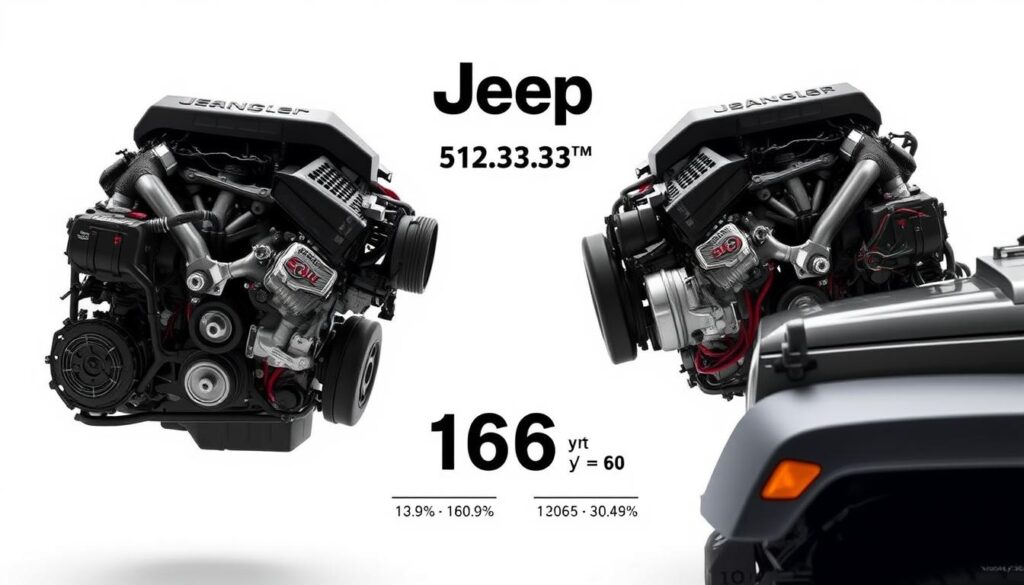
The Jeep Wrangler has several engine choices for different power needs. You can pick from:
- 2.0L Turbocharged Four-Cylinder
- 3.6L Pentastar V6
- 3.0L EcoDiesel V6
- Plug-in Hybrid 4xe Powertrain
When deciding between the jeep wrangler or rubicon, engine specs are important. The Rubicon has stronger engines for off-road use.
| Engine Type | Horsepower | Torque (lb-ft) | Best Use |
|---|---|---|---|
| 2.0L Turbo | 270 hp | 295 | Daily Driving |
| 3.6L V6 | 285 hp | 260 | Balanced Performance |
| 3.0L EcoDiesel | 260 hp | 442 | Heavy Towing |
Performance differences between Wrangler and Rubicon models reflect specialized engineering for distinct driving environments. The Rubicon has stronger parts and more ground clearance for tough off-road challenges.
When choosing between these Jeep models, think about your driving needs. Each engine has its own benefits for different terrains and uses.
Suspension Systems and Ground Clearance Analysis
When we look at the jeep wrangler vs rubicon off road, suspension systems are key. They show how each vehicle handles tough terrains. The jeep wrangler and rubicon have different suspension designs.
For off-road fans, ground clearance is everything. Both the Wrangler and Rubicon have great suspension setups. But, they have unique features that make them stand out.
Front and Rear Suspension Setup
The Rubicon has a stronger suspension for extreme off-road use. It has:
- Heavy-duty solid axles
- Enhanced shock absorbers
- More suspension travel
- Strengthened mounting points
Articulation and Flexibility
Suspension articulation is how well a vehicle stays on uneven ground. The Rubicon leads in flexibility with:
- Advanced disconnecting sway bars
- Electronic stability control
- Wider track width
Approach and Departure Angles
Approach and departure angles are vital for off-road success. They show how the Wrangler and Rubicon differ:
| Feature | Wrangler | Rubicon |
|---|---|---|
| Approach Angle | 37 degrees | 44 degrees |
| Departure Angle | 31 degrees | 37 degrees |
The Rubicon’s angles show its better off-road design. It offers more clearance and better handling in tough spots.
Interior Comfort and Technology Features
The Jeep Wrangler and Rubicon offer different interior experiences. They cater to various driver preferences. Each has its own cabin design, blending rugged functionality with modern comfort.
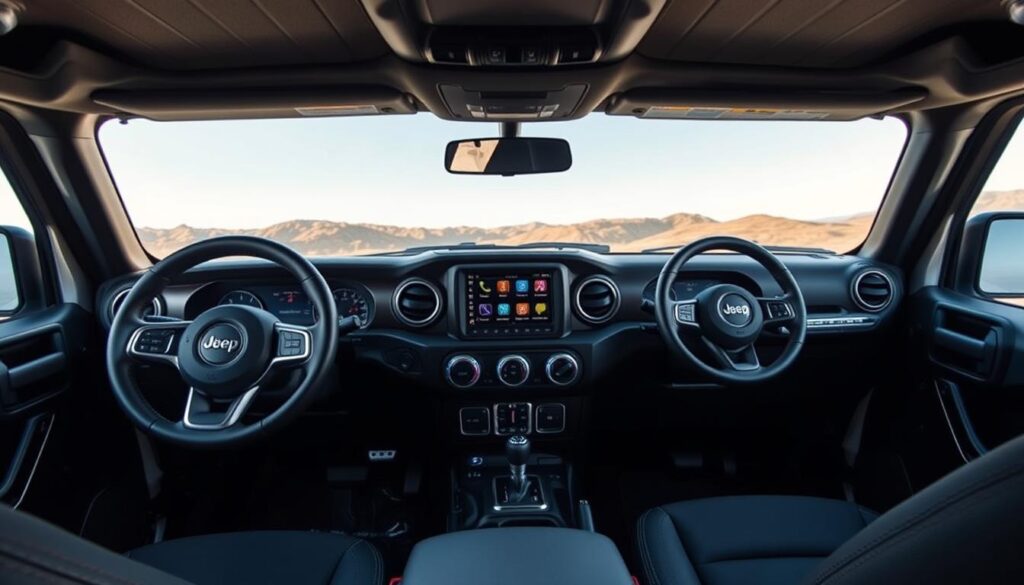
Looking at jeep wrangler vs rubicon interior dimensions, we see big differences. The standard Wrangler has a practical interior. The Rubicon adds premium touches to the experience.
- Seating Comfort: Rubicon offers upgraded leather options
- Technology Package: Enhanced touchscreen display
- Cargo Space: Slightly expanded in Rubicon model
Technological features set these models apart. The Rubicon often has more advanced infotainment systems. It includes:
- 8.4-inch touchscreen display
- Advanced navigation features
- Integrated smartphone connectivity
| Feature | Wrangler | Rubicon |
|---|---|---|
| Infotainment Screen Size | 7-inch | 8.4-inch |
| Leather Seats | Optional | Standard |
| USB Ports | 2 | 4 |
Interior comfort is key for off-road enthusiasts and daily drivers. The Rubicon’s premium interior upgrades make it worth the extra cost. It offers enhanced comfort and technology.
Jeep Wrangler vs Jeep Rubicon: A Direct Comparison
When comparing the Jeep Wrangler and Rubicon, we see key differences. These are important for those who love off-roading and adventure. Knowing these differences helps buyers choose the right off-road vehicle for them.
The Jeep Wrangler Rubicon stands out due to its standard equipment and performance. These features make it different from the regular Wrangler.
Standard Equipment Differences
There are big differences in what comes standard with the Jeep Wrangler and Rubicon:
- Heavy-duty Dana 44 axles on Rubicon
- Electronic front sway bar disconnect
- Beefier 33-inch BF Goodrich KM off-road tires
- Increased ground clearance
Optional Package Availability
Customization options vary between the two models. The Rubicon has more off-road packages, such as:
- Rubicon Recon Package
- Advanced off-road protection groups
- Enhanced suspension upgrades
Performance Specifications
Looking at performance, we see clear differences between the Jeep Wrangler and Rubicon:
| Specification | Wrangler Sport | Rubicon |
|---|---|---|
| Ground Clearance | 8.3 inches | 10.8 inches |
| Approach Angle | 35 degrees | 43 degrees |
| Max Towing Capacity | 3,500 lbs | 3,500 lbs |
For serious off-road enthusiasts, the Rubicon’s better capabilities and design for tough terrains are a big plus.
Price Analysis and Value Proposition
![]()
When looking at the jeep wrangler vs rubicon price, buyers have a big choice to make. The price gap between these two off-road leaders is key to their decision.
The starting prices for Jeep Wranglers and Rubicon models are quite different. To figure out which is better, a thorough cost breakdown is needed.
| Model | Base Price | Top Trim Price | Key Differences |
|---|---|---|---|
| Jeep Wrangler Sport | $29,995 | $42,000 | Standard off-road capabilities |
| Jeep Wrangler Rubicon | $38,325 | $55,000 | Advanced off-road performance |
Important pricing factors include:
- Standard equipment packages
- Off-road specific upgrades
- Performance enhancements
The Rubicon usually costs more because of its better off-road features. For serious off-road fans, the extra cost is often seen as worth it. Buyers should think about their driving needs and budget before choosing.
It’s also important to consider long-term value. This includes maintenance costs, resale value, and how you plan to use the vehicle when comparing these Jeeps.
Maintenance Costs and Long-Term Reliability
When looking at the Jeep Wrangler vs Jeep Rubicon, it’s key to think about upkeep and reliability. You need to consider the cost of owning a vehicle beyond the initial price.
The Jeep Wrangler and Rubicon have different maintenance needs. This affects how much you’ll spend on upkeep and your overall driving experience.
Service Requirements
Both Jeeps need regular care, including:
- Oil changes every 3,000-5,000 miles
- Tire rotation and alignment checks
- Brake system inspections
- Transmission fluid replacements
Common Issues and Solutions
Each Jeep model has its own set of problems:
| Model | Common Issues | Recommended Solutions |
|---|---|---|
| Jeep Wrangler | Electrical system problems | Regular diagnostic checks |
| Jeep Rubicon | Suspension wear | Periodic suspension component inspection |
Resale Value Comparison
The Jeep Rubicon usually holds a higher resale value because of its off-road skills. Resale value depends on:
- Mileage
- Overall condition
- Maintenance history
- Market demand for off-road vehicles
Keeping your Jeep in good shape is vital. It boosts reliability and keeps your vehicle’s value high for both Wrangler and Rubicon owners.
Customization Options and Aftermarket Support
![]()
The Jeep Wrangler and Rubicon open a world of customization for fans. The Rubicon gets more aftermarket support because of its off-road features. This makes it a great choice for those who love to go off-road.
There are many ways to make your jeep wrangler vs rubicon better:
- Lift kits for more ground clearance
- Performance suspension upgrades
- Advanced off-road tires
- Enhanced bumpers and protective gear
- Winch installations
The Rubicon is better for customization because of its Dana 44 axles and heavy-duty parts. It’s perfect for those who love serious off-roading.
| Customization Category | Wrangler | Rubicon |
|---|---|---|
| Suspension Upgrades | Moderate | High |
| Tire Compatibility | Good | Excellent |
| Performance Modifications | Standard | Advanced |
Companies like Mopar, ARB, and Warn offer special parts for customization. The Rubicon’s design makes it easier to add high-performance upgrades.
Think about what you need and your budget when customizing your Jeep. The Rubicon is better for those who want more performance for off-roading.
Fuel Economy and Daily Driving Experience
When looking at the Jeep Wrangler vs Jeep Rubicon for daily use, it’s key to understand their unique traits. Both offer a mix of off-road prowess and city-friendly features. This balance makes them stand out in the world of off-road vehicles.
City vs Highway Performance
The Jeep Wrangler and Rubicon have different feels on the road. In the city, they show slight differences in how they handle and use fuel:
- Rubicon models have a bit more robust suspension
- Standard Wranglers have a better turning radius
- Urban fuel efficiency is between 17-22 miles per gallon
Real-World Fuel Consumption
Fuel economy is a big deal for buyers. The Jeep Wrangler vs Rubicon towing capacity affects how much fuel they use. Here’s what real-world driving shows:
| Model | City MPG | Highway MPG |
|---|---|---|
| Wrangler Sport | 17 | 25 |
| Rubicon | 16 | 23 |
Comfort and Practicality
Comfort on daily drives varies by personal taste. Rubicon models excel off-road but might not be as smooth on city streets. Standard Wranglers usually offer a better mix of everyday use and comfort.
For those who want a vehicle that’s great on both city streets and rough trails, both models are excellent choices in the Jeep family.
Conclusion
Choosing between the Jeep Wrangler and Jeep Rubicon depends on your driving needs and off-road goals. Each model has its own strengths for different types of adventurers. This makes the decision a personal one.
The Rubicon is perfect for those who love serious off-roading. It has special features for rock-crawling and comes with top-notch equipment. It’s great for tackling tough trails with ease.
On the other hand, the standard Jeep Wrangler is better for daily driving. It offers a good mix of comfort and off-road capability. It’s a practical choice for those who want a versatile vehicle.
Before making a choice, test drive both models. Think about where you’ll drive and the costs of owning a vehicle. Both Wrangler and Rubicon promise a journey of adventure and American car excellence.

